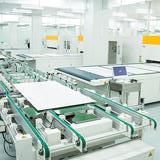

1. Types of pollutants produced by screen printing In screen printing operations, there are a variety of pollutants produced.
These environmental pollutants can be broadly classified into chemical, physical and biological categories. Chemical pollutants and physical pollutants are the main pollutants. Chemical pollution is mainly inorganic substances, such as mercury, chromium, lead, chloride and so on; Organics including organochlorine, phenols, etc.; Physical pollutants mainly include noise, vibration, heat source and so on. Due to the different forms of these pollutants, they can be divided into air pollutants, water pollutants and solid pollutants.
① Air pollutants. Including aerosols (smoke, dust, fog), harmful gases (sulfur oxides, hydrocarbons, carbon dioxide, hydrogen chloride, etc.).
② Water pollutants. Including inorganic suspended solids (slag, iron filings), toxic pollutants (mercury, lead, chromium, phenol, chlorine and other chemical waste liquid), acid and base pollutants (acid and base), oil (oil, lipid, etc.). In addition, hot water, high temperature exhaust gas and other heat sources will also cause water pollution.
③ solid pollutants. Solid pollutants include paper, plastics, glass, metals, ceramics, wood chips and other solid wastes. Noise and vibration are also environmental pollution sources.
2. The formation of pollutants in screen printing production pollutants are mainly caused by photosensitive materials, inks (solvents and pigments).
1) contaminants caused by screen platemaking photosensitive materials. Dichromic acid photosensitive materials commonly used in plate making, in the process of discharge of waste liquid contains a large number of 6 chromium ion Cr+6, Cr+6 toxicity, if the human body comes into contact with the solution containing Cr+6 will produce dermatitis and other diseases; The waste liquid will pollute the environment after discharge. The use of non - toxic diazo salt and diazo resin emulsion-based photosensitive adhesive can eradicate the pollution of chromium ion.
2) Contaminants produced by solvents in screen printing inks. Some solvents in screen printing ink, volatilization or emissions into the air will pollute the environment, affecting the growth of animals and plants. In particular, volatile ink is very serious to air pollution. In addition, some solvents and additives in the ink ignition point is relatively low, in the air to gather and reach a certain concentration, fire will occur. This is should arouse the attention of production units in order to reduce the environmental pollution caused by the solvent in the ink, can take some methods to solve.
Some substrate (such as paper, cloth, etc.) can use water-based ink.
(2) in the printing workshop to install ventilation device, in time to eliminate the waste gas. The exhaust gas can be eliminated by burning, and the exhaust gas can also be purified by spraying water at the discharge outlet.
(3) for ink and flammable, volatile solvents, strengthen the use of management, pay attention to seal
3) Contaminants produced by pigments in screen printing inks. Screen ink commonly used in some metal materials, such as copper, mercury and so on, their ions or vapor can form pollutants. In addition printing and dyeing with salt - based dyes in the locust yellow and methyl violet are carcinogens. The use of toxic pigment printing ceramic containers, glass products, food packaging, children's toys and so on will cause certain harm to human health. The pigment waste liquid can be treated by purification treatment. The use of slightly toxic pigments must be strictly in accordance with the relevant national safety standards. Strengthen management of use and reduce pollution.
3. Air pollutants and their treatment
Air pollutants are substances that enter the atmosphere due to human activities or natural processes and are harmful to people or the environment. Such as exhaust gas and dust. In screen printing, the volatile harmful gases and harmful dust that can enter the air mainly include sulfuric acid, nitric acid, ammonia, carbon disulfide, formaldehyde, methanol, benzene, phenol, acetone, nitrobenzene, trichloroethylene and chromite dust. If the operator inhales or skin contact with these gases will cause a lot of discomfort, such as respiratory tract infection, tearing, dermatitis, numbness, and in severe cases, blood diseases and even cancer. So screen printing workshop exhaust must be treated.
The purification technology of waste gas in screen printing mainly includes conversion method and separation method. The conversion process is to purify the pollutants in the exhaust gas through chemical reactions. Separation is the physical process by which the exhaust gas is purified.
Tel:15158365810
HTML:www.mysyqc.com
Add:No.185, bridge 3 road, xiaoqiaotou village, qiaotou town, cixi city